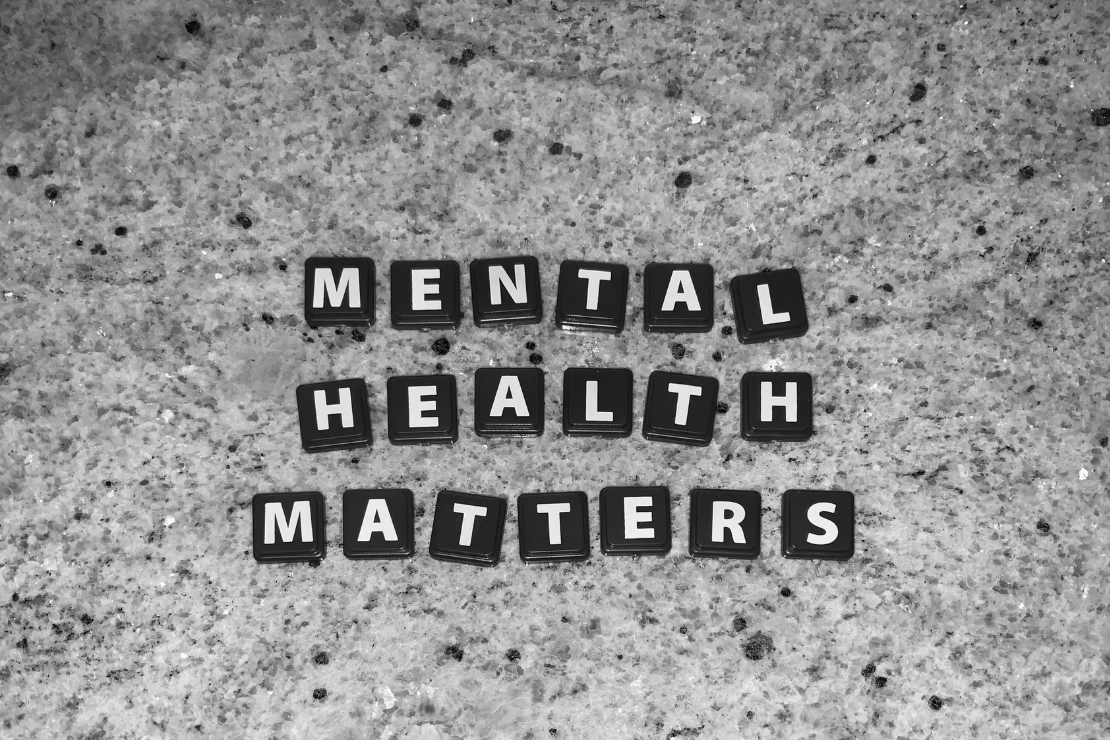How Science Can Help Your Mental Health
Aug 17, 2021

By Laura Garcia, Ph.D., Director of Research, Design and Product Innovation at AppliedVR (Techstars Healthcare Accelerator 2016)
As a clinical psychologist, I have helped people gain a greater understanding of who they were, who they wanted to be, and how they wanted to get there. Though I could not always relate to many of my clients’ difficult life experiences, I used two tools that helped me join them in their process of self-discovery: scientific thinking and compassion. With these, I witnessed clients arrive at insights in therapy that motivated transformative changes in their lives. I knew that it was time to end our journey together when my clients could at least use these two tools independently.
If you are an entrepreneur struggling with your mental health, engaging in this discovery process with a professional can be invaluable. For those who might not have the means, opportunity, or the urgency to engage in psychotherapy, engaging in scientific thinking for your mental health can be a great start. With this tool, you can arrive at different perspectives on your struggles and gain insights that will hopefully motivate you to change the way you approach your mental health, your life, and even your business.
What is Scientific Thinking?
Scientific thinking is the act of seeking knowledge to improve the current understanding of a topic. Personal science is using this scientific thinking for self-discovery by intentionally seeking knowledge about the self. It is the process of observing, questioning, and revising the many narratives, stories, or expectations that impact our mental health: narratives about who we are, why we do or experience things, and who we think we should be. This inquiry process brings to our awareness the things that we know, but also the things that we are unaware of. To start using personal science, you can use the following steps to run a simple observational exercise based on your own experience.
Step 1: Acknowledge that there is something to learn
This step is about being willing to identify any red flags or signs indicating that you are in need of more balance in your life. These can include increasing physical (e.g., muscle tension) or psychological discomfort (e.g., stress, burnout, sadness) and the overusing of coping strategies (e.g., distracting yourself or relying on substances). You may or may not be aware of all your red flags. What matters is that you try to identify them.
Step 2: Question your experience and learn about your current narratives, expectations, or behaviors
The goal of this step is to understand what you think is happening. You might question how your red flags relate to your work, relationships, or habits. You might want to write down what you think a balanced life looks like and compare it to your current life. Thinking about an ideal only helps identify our current narratives and expectations about our mental health. The reality is that you might or might not be completely accurate about what balance means in your circumstance. There might be factors or behaviors that are important that you don’t know about yet, or you might adhere to ideals that might not reflect your actual experiences, who you are, or what you value.
Step 3: Design a check-in system or tracking journal
This step allows you to gain a more nuanced perspective of your day-to-day experience. This could challenge some of your narratives as well as help you identify behavior changes to focus on. This may look like committing three to five minutes every day for a set number of days to have a moment of reflection or check-in with yourself. It does not matter whether it’s early in the morning or late at night as long as you allow yourself time to report on your daily experience.
Use your previous reflections to guide what you track. I suggest tracking any of your red flags, whether they are physical or psychological or both. Given the focus on mental health, you may track your emotional state (e.g., writing the emotions you felt during the day or rating a set of emotions that you experience often or would like to experience more). I often use this printable feeling wheel to help me identify my emotions. I also make sure to track both pleasant and unpleasant emotions.
Additionally, briefly track information about your daily context and routine. This could be important events, conflicts or interactions with others. Discuss any stressors or things that were on your mind during the day. The more information you provide about your context, the more clarity you will gain about what impacts your mental health when analyzing your data.
It is ok to miss days as long as you continue until you complete the set days you decided. To improve your success with this task, incorporate this check-in before or after some of your routines and add calendar reminders. You can do this check-in on a notepad or on a digital platform that you think is relevant. I have used Google Forms in the past to streamline this process.
Step 4: Analyze and reflect on your data
You might have noticed that the mere act of tracking how you were feeling allowed you to identify triggers for your discomfort. You might have intuitively arrived at these insights and that is great. However, this step is about trying your best to be objective when looking at your responses.
In general, there are many ways to analyze your data, and you can do as much as you can. I try to gain insights by looking at means, medians, proportions, and correlations if I collected enough data. I also use Excel or Google Sheets to graph my scores over time. However, you do not need data science to make meaningful interpretations. Ultimately, it is your interpretation that matters. So, to interpret your data look for evidence consistent or inconsistent with your initial impressions of your mental health. Try to find patterns and relationships that may lead to helpful ideas. Lastly, look for any new information about events or behaviors that seemed more important than you initially thought.
Step 5: Summarize your findings
In this step, you have the opportunity to encapsulate the main insights that you came across during this observational exercise. Even if these are minimal, try to describe what you gained in general. For instance, if you have engaged in the entire process up to this point, you should at least celebrate that you developed a healthy check-in habit in the midst of a chaotic schedule.
The purpose of this step is to solidify what you learned about the accuracy of your previous narratives. If they were accurate, perhaps you can identify what factors were most connected to your emotional state. If they were inaccurate, then take time to question your narratives. After this exercise, you will have a better sense of how you feel emotionally on a day-to-day basis and the many factors that impact your experience. With this information, you can reflect on what would be possible next steps to improve your mental health.
For instance, with this exercise, I learned that taking a walk in nature was more likely to trigger feelings of peace and help with my anxiety than completing all the tasks I had during the day. Therefore, my next step was to predict what would happen if I took nature walks at least three times a week. I then designed a self-experiment where I tracked minutes of walking every day for four weeks and examined any changes in my emotions. This guided my efforts towards a behavior change that eventually became an integral part of my self-care routine.
Step 6: Share and discuss your findings
Whether you gained many insights or just a few, discussing what you learned with others can be a great way to maximize your learnings. Though it might be intimidating to discuss this, by doing so you are allowing yourself to connect with them and share in their experience. You are also able to hear different perspectives on your insights. In my experience, multiple viewpoints allowed me to clarify any doubts or questions I had while doing the exercise. It also made me realize that I am not alone and that the people I care about may share the same narratives or struggles I observed in this exercise.
This six-step observational exercise is just one way in which you can apply scientific thinking to learn about and possibly improve your mental health. Though some of us might already be doing this mentally, it is likely that we disregard information that does not match our current narratives. We may also have biases in our recollection of our experiences. Though we cannot be entirely objective when collecting or describing our data, we can at least become aware of these narratives and biases so that we can find ways to change them. Tracking our data on purpose can therefore lead to a more accurate perspective of where we are. Furthermore, analyzing this data also allows us to take a step back to understand how to adapt to demanding circumstances and make choices that better match our needs. The beauty of this framework is that as personal scientists, we can strive to continue engaging in this scientific thinking as many times as needed to gain and maintain our balance in life and work.
If you have any questions or would like to share your experiences, please connect with me at www.lauragc.com.
About the Author

Laura Garcia, Ph.D.
Laura Garcia, Ph.D. is the Director of Research, Design and Product Innovation at AppliedVR. She shapes the development and evaluation of therapeutic virtual reality (VR) programs for chronic pain. She completed her Ph.D. in clinical psychology at the University of Southern California where she investigated the use of virtual humans for clinical interviewing. Her professional focus is on increasing access to innovative digital therapeutics to support wellbeing. She was born and raised in Bogota, Colombia and loves dancing and spending time in nature.

